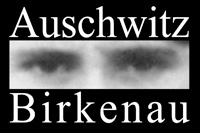




Food
Menus for prisoners of concentration camps were based on nutritional norms specifying the ingredients necessary for preparing meals, and their caloric value. Often, however, the makeup and nutritional value of the meals did not correspond to the nominal specifications, either because functionaries pilfered food articles, or because the food was of low quality or spoiled.
Prisoners obtained three meals over the course of the day. In the morning they were given half a liter of liquid to drink. The midday meal consisted of about one liter of soup. Beginning in 1942, products originating in the baggage of Jews murdered in the gas chambers were also used in the soup. For supper, half a liter of liquid was given to drink along with approximately 300 g of black bread, to which a bit of the lowest‑quality sausage or margarine was added, or a tablespoon of marmalade or cheese. The bread obtained in the evening was supposed to suffice for breakfast as well, but the famished prisoners usually ate the whole portion at once; the fear that it would be stolen during the night was also a factor.
The low nutritional value of the meals and the associated insufficiency of animal protein, fat, vitamins and mineral salts led to the rapid wasting away of the organism (Muselmann).
